
Issue #: 141
Published: May / June 2015
- Price per issue - digital : 5.40€Digital magazine
- Access to Multihulls World digital archives Digital archives
Continuing his trip around the world with his family on board Jangada, Olivier recounts their bizarre stopover at Mopelia
Early morning August 18th, as soon as the sun was coming up over the horizon, and while everyone else aboard was still asleep, I discretely dropped the dinghy into the water, fired up the 15hp Yamaha motor, and went to check out the state of the pass at Maupiti (see report in Multihulls World #140). The conditions seemed good, with the wind blowing East by North at 15 knots. The current was outgoing, but moderate. The boat had been ready to leave since the previous evening. I got back on board, closed all the hatches, checked that no lines were trailing overboard, got out the lifejackets and made myself a black coffee. If I’d had a Cuban cigar left, I would have lit it this morning, just before going through the pass at Maupiti. It’s about feeling alive again. We made it out into the ocean with no problems, hoisted sail, and set a course for Mopelia, a hundred-odd miles to the west. We didn’t overdo it, as we would have to wait until first light the following morning to enter the lagoon. I spent the night in the salon, to make sure that we were making a particularly slow approach to the atoll of Mopelia. Slow, but safe. Little sleep for me that night. It would be no use ending up on the reef on the windward coast… By dawn Jangada was just on the leeward side of the atoll, two miles from the pass. I put the kettle on to boil, and went to wake up Marin, who had become my second in command for on-board maneuvers. He would be celebrating his 13th birthday in Mopelia in a few days’ time!
Traces of former human activity, which nature is eradicating little by little…
Mopelia (or Maupihaa) Atoll has one small, narrow pass which gives access to the ocean. It is rather prettily named Taihaaru Vahine and is located to the northwest. I spotted it easily as it was getting lighter, thanks to the line of current flowing out to sea, in the line of the pass. With the sails furled, we slowly made our approach. Cyclones have done away with the outer buoyage, and only two little black and white poles fixed on the coral flats remain. The pass itself is fairly deep, but it’s once you get into the lagoon that you have to pick your way between the coral heads. Most of them you leave to port, but there are one or two big ones to leave to starboard. The main difficulty with the pass at Mopelia is the outgoing current. It is sometimes strong, and flows straight down the middle of the pass, meaning that you have to pass very close to the reef, something like 5 meters from either side. There would be no chance of making a U-turn in the middle of the pass, which is around 200 meters long. The current can get up to 6 or 7 knots. I quickly checked the engine rooms. Then, as the sun was climbing above the horizon, we had several goes at getting on the outgoing conveyor belt created by the current. This gave us the exact course for going through the pass. Our approach maneuvers had woken Barbara and Adélie, who stared silently at this new island. A magical moment. Ahead of us was the reef: very low in the water, and beyond, some motus covered with coconut trees. The electronic chart showed our position as being just on the reef, with a discrepancy of 200 meters towards the south… The chart is evidently incorrect, but that’s not that important. In these parts, navigation must be visual.
Marin, harnessed on, took up his lookout position at the first set of spreaders. He was tasked with spotting any dangerous coral heads in the entrance to the lagoon. From offshore, the pass looked impressive. It wasn't very wide and we could see the overfalls. I lined up the catamaran along the line of the current, and set both motors going at 2,000 rpm. And we were off! The boat didn’t feel like it was making progress against the current, but meter by meter we were advancing over the water. I picked up to 2,200 rpm and we moved, slowly, toward the lagoon. After a few long minutes, when everyone was at maximum concentration, the two little beacons were abeam. We were through the narrowest part, where the current is at its strongest. We were progressively making more speed over the water, so I eased back to 2,000 rpm, and finally we were out of the funnel. Marin guided us through the coral bommies, and we found ourselves in depths of 15 to 20 meters. There was relief at having made it through the tricky bit, and into the quiet of the lagoon. On an administrative level, Mopelia is attached to Maupiti, as are the small isolated atolls of Scilly (or Manuae) and Bellinghausen (or Motu One). These were inaccessible to us, as they have no entrance passes.
An island with some peculiar inhabitants…
It was a German aristocrat, Count Felix von Lückner (1881-1966) who, during the First World War, put Mopelia on the map. A modern German privateer, von Lückner was in command of the Seeadler (Sea Eagle), a three-masted square-rigger. It had the deceptive appearance of a cargo ship of the period, flying, most often, the Norwegian ensign, though sometimes American or British. In reality, von Lückner’s ship had been captured by a German U-boat in 1916. Shortly after this, it had been transformed by the naval dockyards at Bremerhaven into a camouflaged privateer, equipped with a 1,000 hp 4-cylinder diesel motor and fitted with two 105mm concealed guns, and two heavy machine guns… The Seeadler, with many passageways and secret doors, could make 11 knots under motor, and was capable of 15 to 16 knots under sail, downwind. The Kriegsmarine mission assigned to von Lückner was to hunt down, pillage and then sink the maximum number of allied cargo ships around the world. And von Lückner set about this with rare style. The Count seemed to make his warring acts of piracy a matter of honor, making sure that his actions were never the cause of any directly injured victims. For repairs, revictualling and a bit of R and R for the crew, without being spotted, von Lückner put into Mopelia on July 29th 1917. The narrowness of the pass and probably the lack of depth where it joins the lagoon (around 3½ to 4 meters), wouldn’t allow the Seeadler to get into the atoll. It’s also possible that von Lückner didn’t want to risk being intercepted himself once inside. Whatever the real reason, he decided to anchor outside the reef. Just south of the pass… An especially uncomfortable and dangerous position for the ship, with the depths dropping away rapidly from the reef flats, necessitating the anchor to be dropped very close to the reef. A heavy swell (which von Lückner was later to describe in his memoirs as a tsunami) caused the anchor to drag, stranding the ship on the reef on August 2nd 1917.
And today the three-masted corsair lies in thirty meters of water, immediately south of the pass… The German crew and their American prisoners, all lived as castaways for several weeks on the atoll of Mopelia, in a makeshift camp. But the story goes that von Lückner was not a man to admit defeat… at great risk, he set sail aboard one of the Seeadler’s boats which was just 6 meters in length. He sailed to Fiji via the Cook Islands, Niue and Tonga. He was eventually detained in New Zealand, and later Australia, but was back in Germany by 1919.
There is little of the wreck of the Seeadler left on the reef today. Pacific cyclones, and a few treasure-hunters, have left the site clean. But I’m told that every now and then a few well-informed divers charter a potimarara from Maupiti and go diving on the wreck of Count Felix von Lückner’s Sea Eagle, just on the reef dropoff at Mopelia, right next to the pass…
Black-tipped reef sharks prowling around us in shallow water…
We crossed Mopelia’s lagoon between the coral heads and the abandoned lines of pearl oysters, which are sometimes just below the surface, ready to snare rudders and propellers. After a little recce in the dinghy, we dropped the anchor 200 meters off the beach on Maupihaa motu, to the southeast of the lagoon. The island’s best anchorage. We could see a little boat pulled up on the beach, and evidence of a camp. Further to the north, a second camp could be seen. According to the information I had been given, the one to the south was that of a family originally from the Austral Islands, and the one to the north was that of a family originating from Maupiti. Here it pays to know where you should set foot…
…Because human behavior is surprising, and let’s face it, sometimes appalling. At Mopelia, thousands of seabirds live peacefully with sea turtles (decimated by the islanders for food and for their shells for years, despite them being officially protected). Surgeon fish, parrot fish, wrasse and jacks share the lagoon with a few thousand sharks, and hermit crabs make their home on the motus along with topus, the little coconut crabs… But the last two families to arrive on Mopelia (the one from Mopelia and the one from the Australs) can’t stand each other, and death threats flying from one to the other are commonplace.
Turtle tracks on the beach at Maupihaa, after a night’s egg-laying…
Usually passing yacht crews are made very welcome in places such as this. Visiting the island, children playing, two or three things to fix… But here, we were on our guard. First of all, the dogs, which were filthy, came to greet us. There must have been at least a dozen of them. I picked up a stick, but almost immediately came across the clan chief, a massive, loutish looking guy, who demanded I drop the stick. He explained that his dogs are trained to attack anyone carrying a stick! A threatening, aggressive conversation ensued, most surprising on a lost atoll, where you’d more expect to find tranquility. A kind of a warning really. The best that could be said was that it was not a particularly warm welcome. Several people were there, doubtless for the copra harvest. There was a woman there as well. A large lady, equally loutish-looking, who was the wife of the clan chief. And a child. Curiously guarded from our viewpoint. He must have known what was going on, the poor thing. The camp is dirty, trash scattered everywhere: barrels, old nets, fishing floats, tin sheets, scrap metal. Copra drying sheds. There was also a quadbike, and oddly, a scooter, given that there was only one trail crossing the motu to get from the reef flats to the east side. Chickens were wandering about here and there and pigs were circling about in a pen that was too small for them. There was no love lost between the crew and the southern clan. Heading north 5 or 600 meters along the beach, was the other family’s camp. They originated from Maupiti. It was much cleaner up there, better kept, but there was no one to be seen. I thought to myself that these two families could have put a bit more distance between themselves, the motu being 8 kilometers long!
The southeast point of the beach is the most sheltered, with the calmest water in the lagoon, where there is a little pool which can be closed off at night with a fishing net, to gather more fish than you need. This is also where turtles come to lay their eggs in the right season… However, the old village had been located at the opposite end, right at the north of the main motu. Years ago there had also been a meteorological station at this spot. There are only a few remaining ruins, and a cyclone has destroyed the old concrete dock which served the installation. Barbara felt uneasy with this heavy atmosphere, particularly following our dream stopover in Maupiti. For sure, staying in a place which could be paradise, but has obnoxious squabbling, generates strange feelings. To top it all off, no sooner had we anchored than there were some sizeable black-tipped reef sharks circling the boat…
The landscape of the reef flats at Maupihaa… Magnificent, but what a strange atmosphere!
It could be worse! The second birthday that Marin had celebrated on the boat. The home-schooling teacher announced it would be a day off. Good tactical decision! We decided to have a barbecue on the beach. Early in the morning, Marin and I set off in the dinghy to go fishing in the pass. We took 3 trailing handlines, a knife, a speargun, gloves, gas, and off we went. We had been through the pass several times, but the fishing was far from miraculous. We’d gotten soaked, been thrown around, used up most of the gas, but the wahoo, who we were hoping was going to end up on our barbecue was still well and truly in his natural element. The gray reef sharks below must have been laughing at us! We did, however, bring home an emperor snapper, a fish from the lagoon, but eventually we decided not to eat it, due to the risk of ciguatera poisoning. Adélie concocted a delicious chocolate fondant for her brother, and Barbara spoiled him with an apple crumble. Lunch started with dogtooth tuna sashimi, done in the Tahitian style, followed by mahi-mahi grilled in foil over a wood fire. In the afternoon we played on the beach, then we decided to get rid of the emperor, the 5 or 6 kg fish we had caught in the pass in the morning, hesitated over, and then not eaten. The children found a short length of rope on the beach, which I passed through the gills of the dead fish, and then threw it out towards the little sharks of 30 to 40 cm in length, who were swimming in 15cm of water. They attacked it, but had trouble biting into the flesh. I ended up slicing the fish open with a knife, and then they found it easier. There were now 4 or 5 of them fighting over it, and this dispute attracted some more serious contenders. First off we could see a black-tipped reef shark approaching, then a gray reef shark. I pulled the fish in on the line, waded out up to my knees, and threw it about 15 meters. The two sharks jumped on it, fought over it, and finally the gray reef shark swallowed it whole. Then the line went tight, and the gray was hooked, by the stomach! He wondered what to do, thrashed around in not much water, slapping with his tail fin, but slowly I pulled him toward me. He was maybe two meters in length? From the beach, the crew of Jangada watched this bizarre scene unfolding before them. I wondered what was going to be the next step, thinking that above all I should try and keep all my toes, when the shark provided the solution: in one final contortion, the rope went between his teeth and was immediately sliced clean through. In a great splash of water, he got himself out of the shallows and headed off for the depths of the lagoon…
On the morning of August 25th, we set off from Mopelia, heading west, bound for the atoll of Suvarov, some 570 miles distant. In the afternoon we passed Manuae atoll to starboard, and with that we left French Polynesia after an enchanting stay of almost four months. Suddenly the fishing line we had out to starboard went tight! Three-quarters of an hour’s fighting later, we hauled on board a marlin of over 2 meters in length! Over the following hours, Jangada once again became like a factory trawler. A final gift from French Polynesia to this sailboat headed west to more foreign lands…
The pass at Maupihaa (©Navionics)
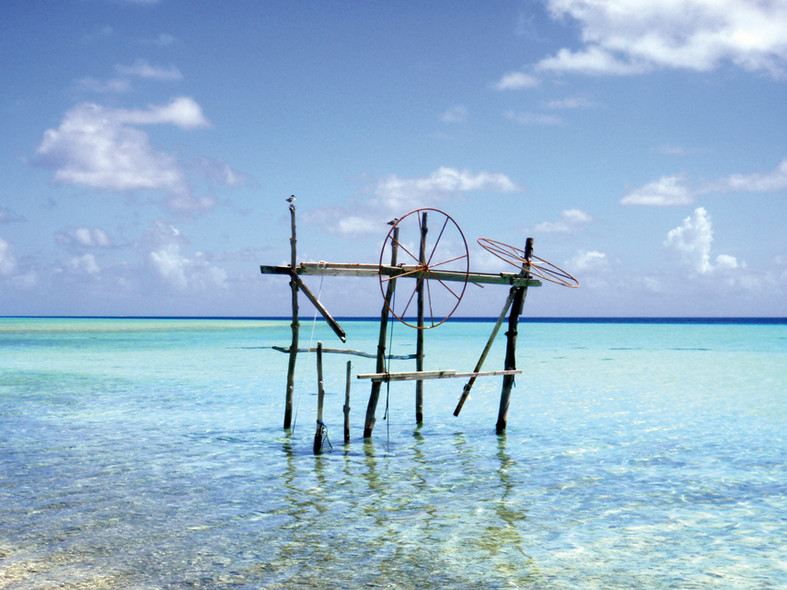
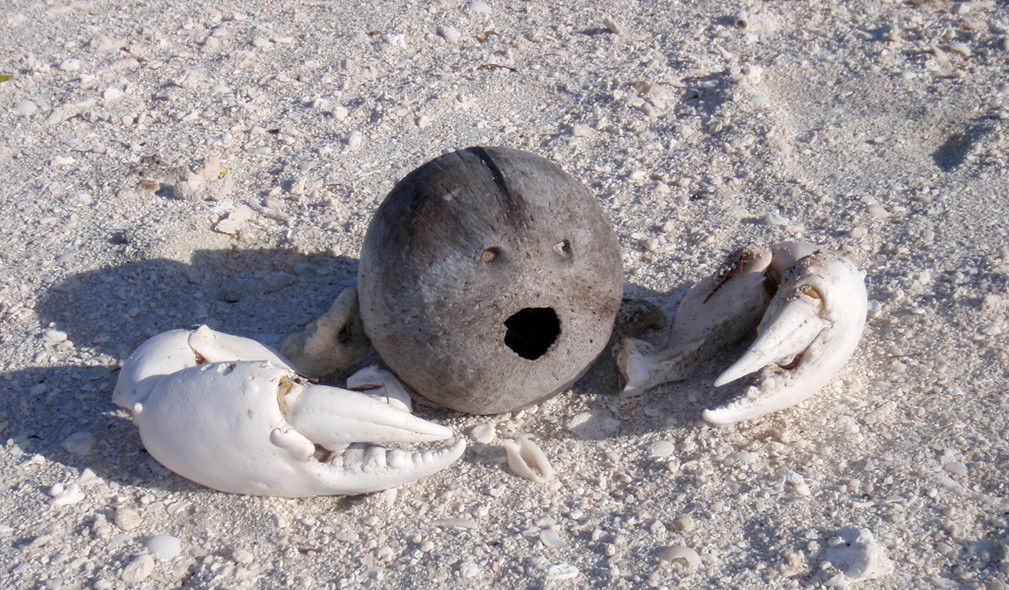
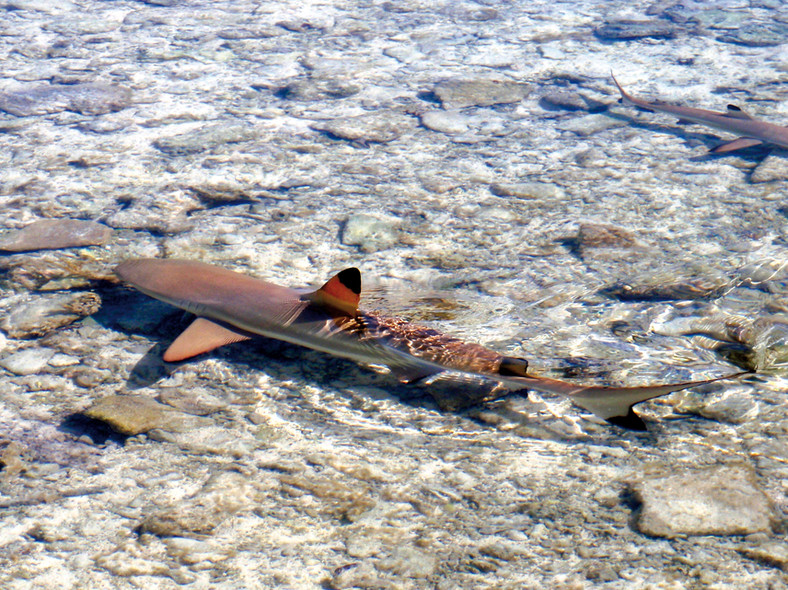
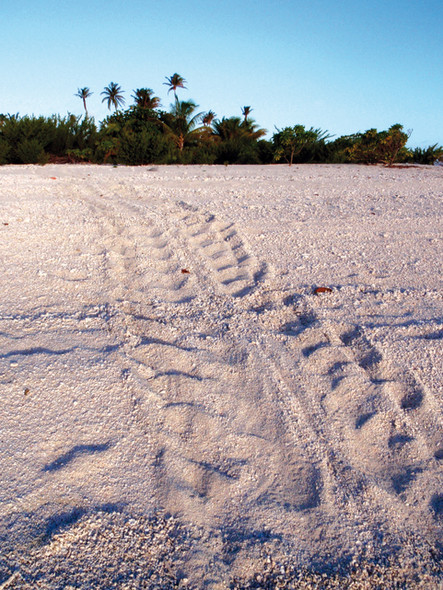
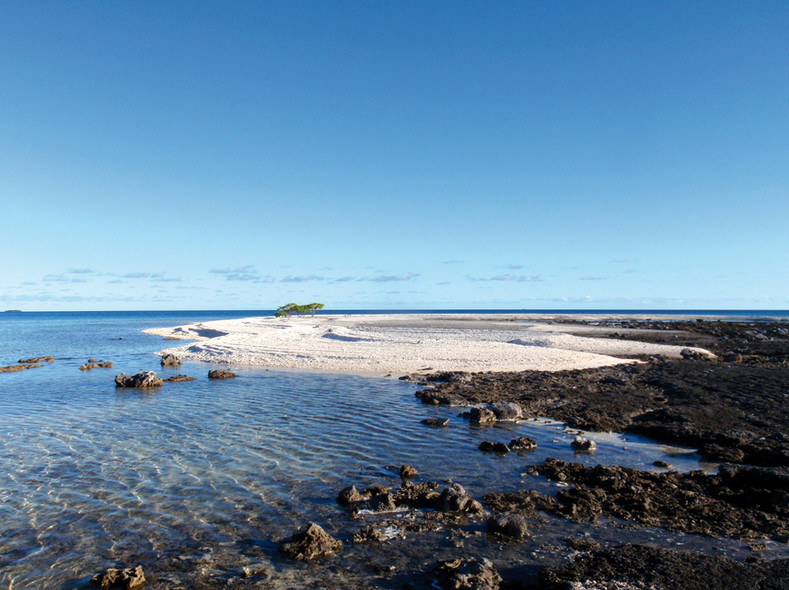
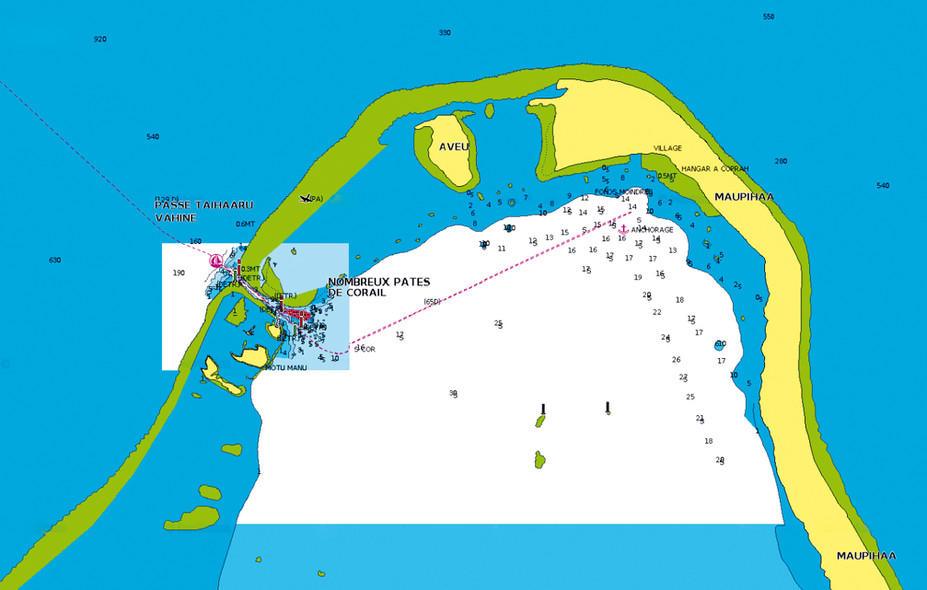
What readers think
Post a comment
No comments to show.